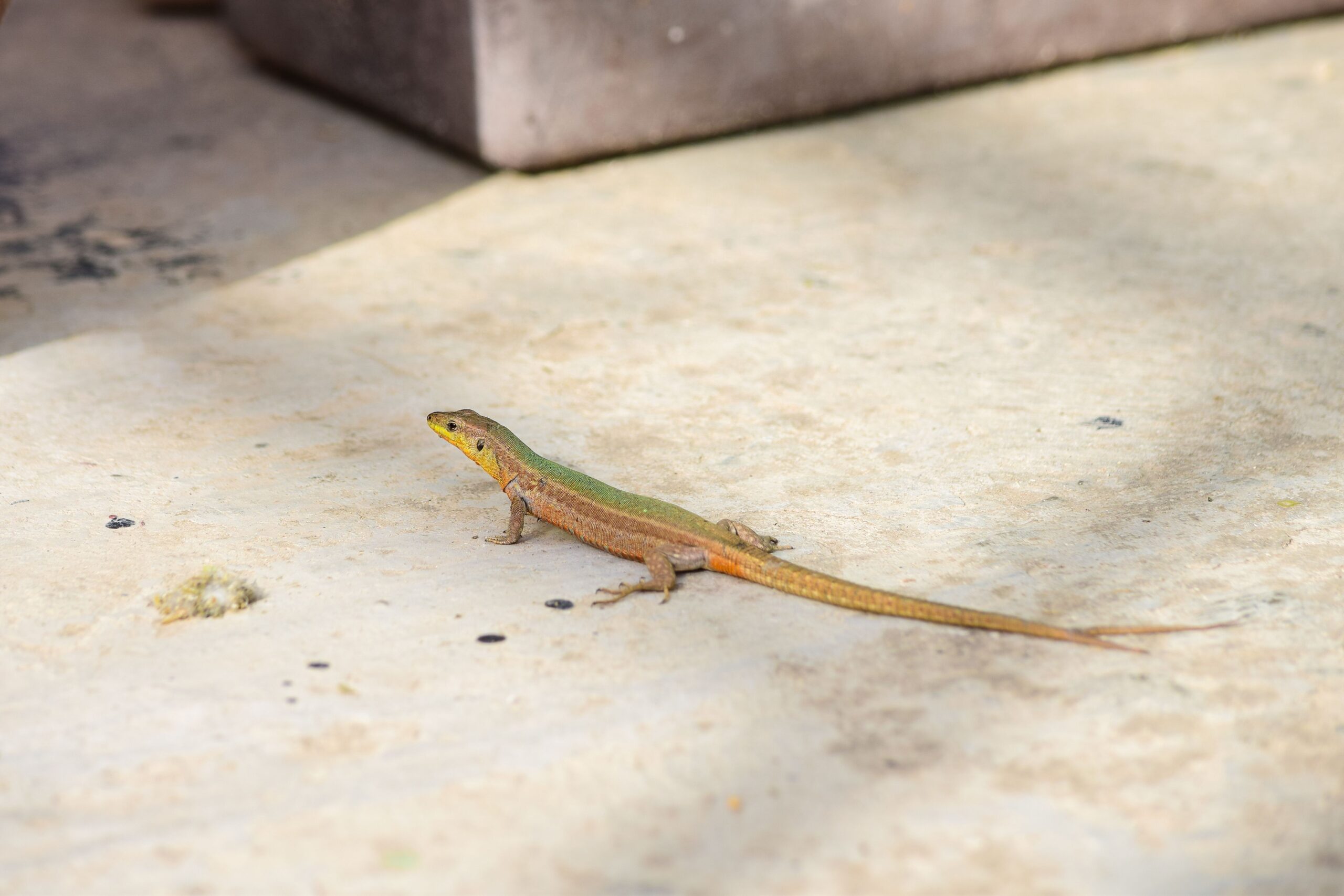
If you’ve ever walked into your living room and spotted a lizard casually hanging out on your wall like it pays rent, you’re not alone.
Lizards are not exactly the best of friends so when they are encroaching on your space, your brain goes into war mode and wants to get them out immediately.
Although they are generally harmless, they are quite known for slipping into homes through open windows, doors, or even the tiniest cracks.
So, how do you get a lizard out without turning your living room into an action movie scene? Here’s a step-by-step guide to getting the job done calmly, safely, and effectively.
1. Stay calm and don’t chase it
Don’t panic, or at least try not to from the get-go. Lizards move fast, and the more you chase them, the more likely they are to dart under furniture, behind curtains, or into the most inconvenient corner of your home.
Take a deep breath, keep your movements slow, and resist the urge to grab the nearest broom like you’re in a battle.
READ ALSO: These 5 things in your room might be attracting cockroaches
A calm approach gives you more control over where the lizard goes, which makes it easier to guide it outside.
2. Identify where it’s hiding
Lizards are pros at finding hiding spots. Look along walls, behind picture frames, under furniture, and inside curtains. Sometimes they even cling to ceilings.
Once you know where it is, you can create a “path” to lead it out.
If you can’t spot it right away, turn off the lights in the room and wait a bit. Lizards tend to move around when they think no one’s watching.
3. Open the exit points
Your goal is to make leaving the easiest option for the lizard. Open doors and windows in the direction you want it to go, ideally leading outside to a safe spot.
READ MORE: 10 ways to prevent cockroaches from your home
If possible, close off other rooms so the lizard doesn’t wander deeper into the house.
Light and warmth often attract lizards, so having an open, well-lit exit can work in your favour.
4. Guide it gently
You need to use gentle guiding tools here:
-
A broom or mop to not swat but slowly nudge the lizard toward the exit.
-
A piece of cardboard which will help to block off escape routes or gently direct its movement.
The idea is to give the lizard no reason to panic, so it naturally moves toward the open door or window.
5. Try the container method
If guiding is not working or the lizard is stubbornly staying in one spot, you can trap it humanely:
-
Take a clear container (like a plastic storage box or a large bowl).
-
Approach slowly and place it over the lizard.
-
Gently slide a piece of stiff cardboard underneath until the lizard is inside and secure.
-
Carry it outside and release it far enough from your house so it’s less tempted to come back.
This method works best when the lizard is on the floor or another flat surface.
RECOMMENDED: How to get rid of stubborn cockroaches in your home
6. Use natural deterrents (optional)
If lizards keep showing up, you can discourage them from entering by making your home less appealing. Common natural deterrents include:
-
Eggshells: Place them near entry points. Lizards dislike the smell.
-
Garlic or onion slices: The strong scent can keep them away.
-
Pepper spray (homemade): Mix water and black pepper, and lightly spray near windowsills and doors.
While these methods are not foolproof, they can reduce the chances of repeat visits.
7. Seal the entry points
After you’ve safely relocated your uninvited guest, it’s time for prevention. Check your doors, windows, and vents for gaps, and seal them.
Make sure your window screens are intact and your doors close fully.
Lizards can squeeze through surprisingly small spaces, so a thorough check will save you future encounters.
EXPLORE: 5 Ways to prevent wall geckos from your home
What you should not do
-
Don’t harm it: Lizards are harmless to humans and actually help control pests like mosquitoes and flies.
-
Don’t spray harmful chemicals: This can injure the lizard and create unnecessary mess.
-
Don’t cause chaos: Yelling, stomping, or waving objects around will only make the lizard harder to catch.
The bottom line
Getting a lizard out of your house can be stressful but it doesn’t have to be a dramatic event.
With patience, a few simple tools, and a calm approach, you can guide it safely back to the outdoors where it belongs.
READ THIS: 5 insects that can live comfortably in human bodies
